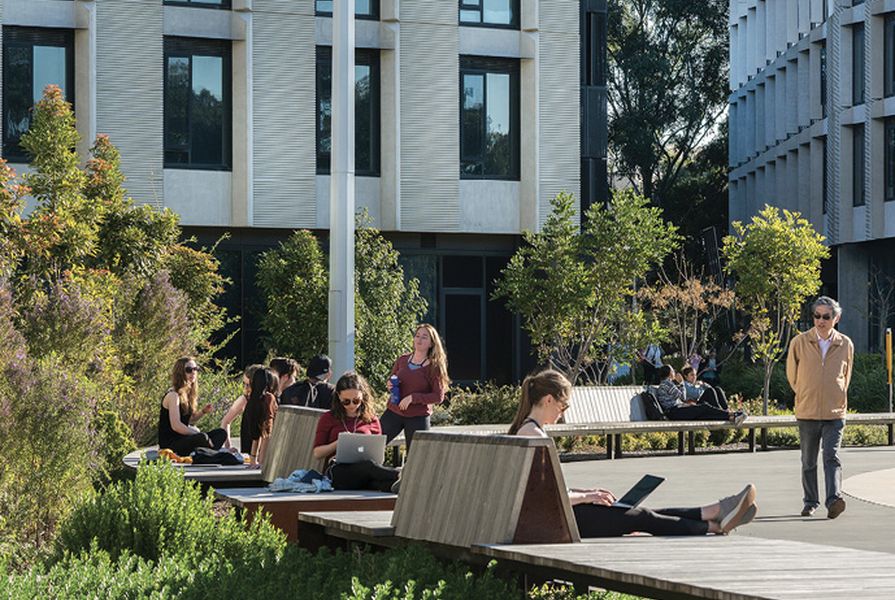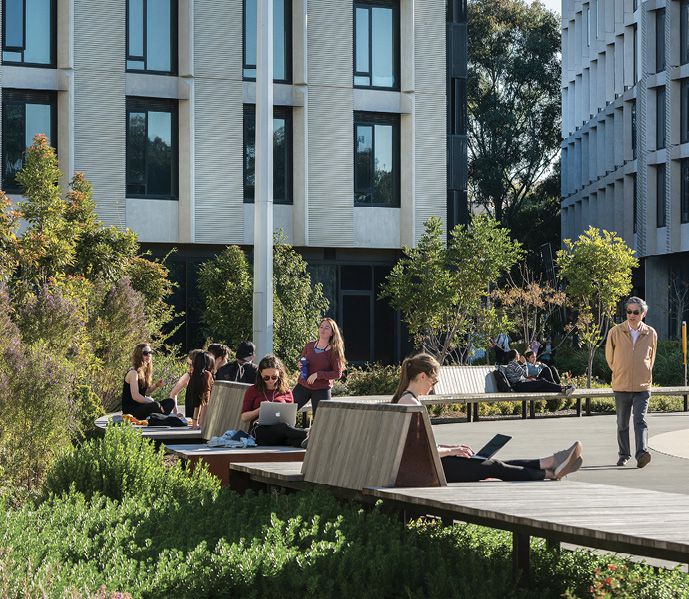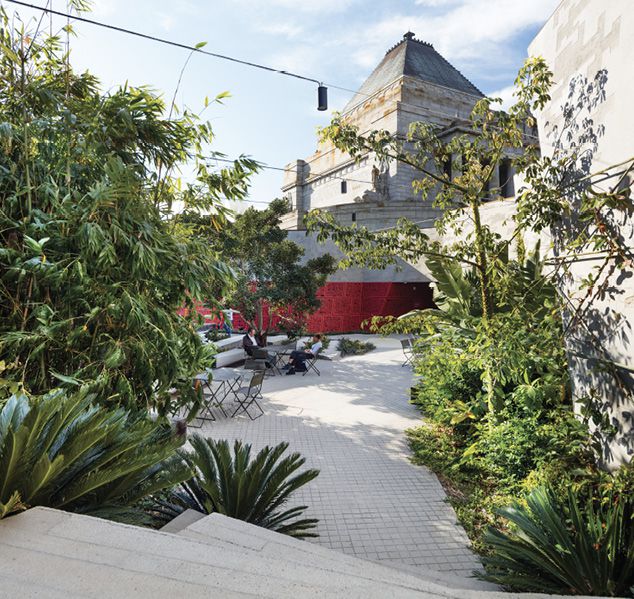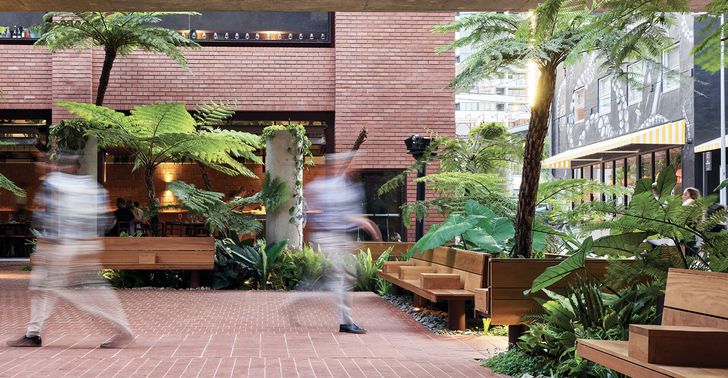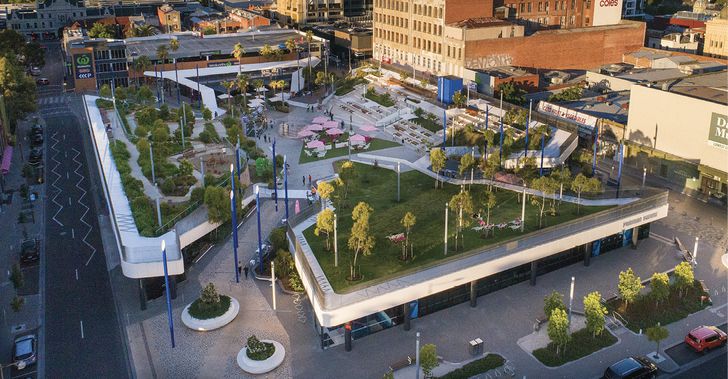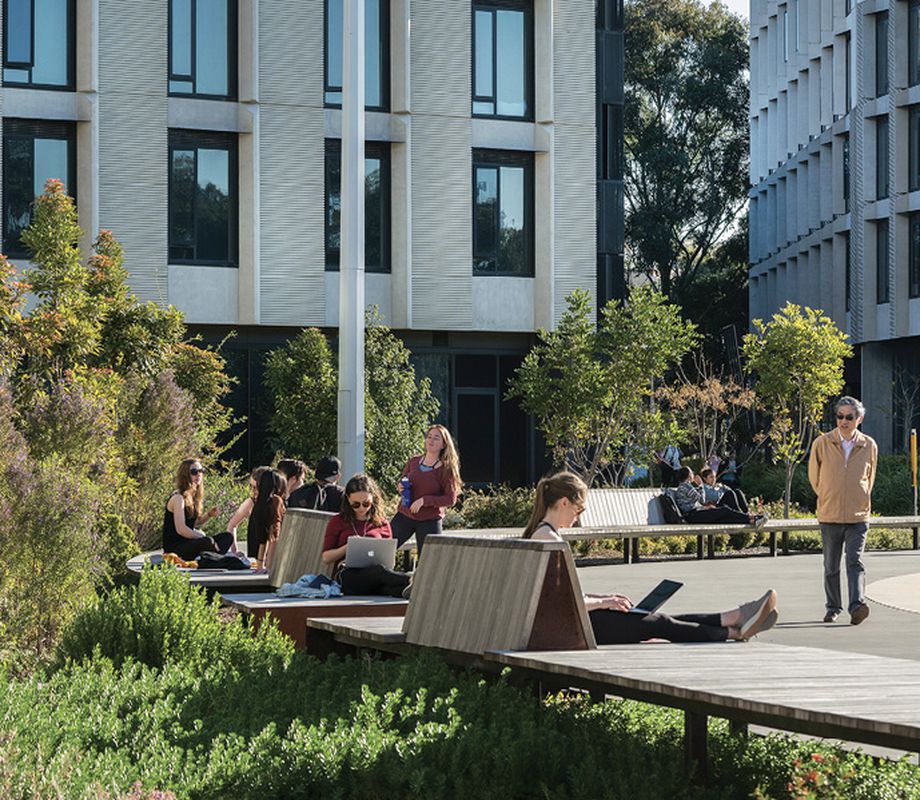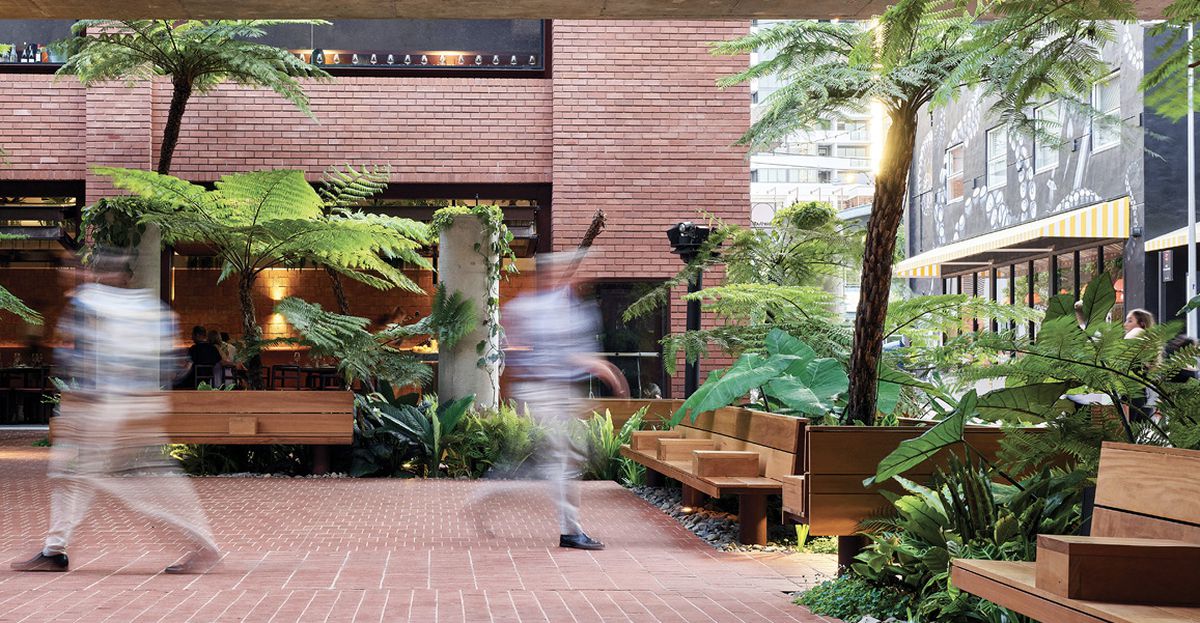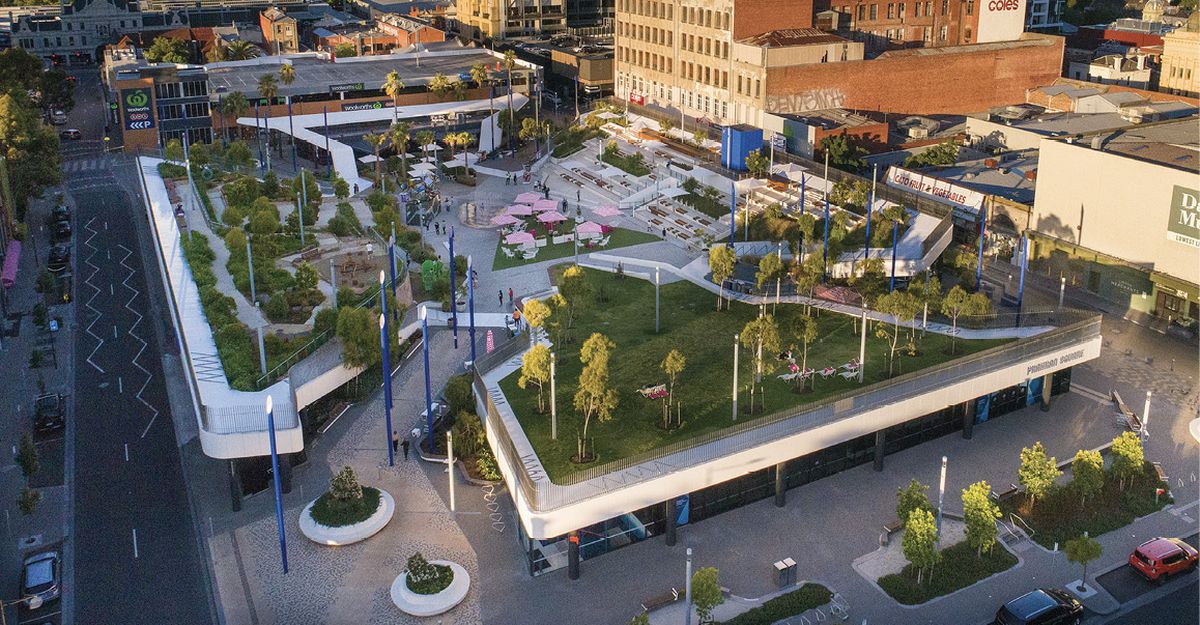In September 2021, a review of a significant new mixed-use development in Melbourne’s central business district was published in Architecture Australia, sister magazine to Landscape Architecture Australia. Introduced as “a collaborative new tower, plaza and park,” the project made the front cover with an evocative photograph of a lone woman touching a curvaceous water wall. The central narrative was that this was much more than another city tower: it was an exemplary piece of urban design that provided much-needed urban green space and fine-grain mid-block connections. As with any project of its scale, it involved the expertise of many consultants, but the initial competition-winning concept was developed by a team of architects, landscape architects and urban designers.
Yet the review of the project, written by an architecture academic and practising architect, acknowledged only the architects (two practices) as the project’s design authors. The landscape architects were not mentioned once, despite the review discussing the landscape and public realm design at length and even acknowledging the late landscape architect who had designed the previous plaza on the site. Clearly this was an error, and it was amended in the online version soon after a complaint was raised. I know this because I was the one who raised it, working as the communications manager for the project’s landscape architect at the time. Everyone understands that mistakes happen – but this is a common one. It seems as if almost every landscape architecture practice has its own story of being entirely omitted in the media coverage of a significant project.
I’ve been responsible for marketing and media relations at two landscape architecture practices over the past four years, and I was the editor of this publication prior to that. I’ve witnessed many cases where design authorship was misrepresented or contested among members of a multidisciplinary project. And while not always the case, it was overwhelmingly architecture practices or architecture-trained reviewers who failed to acknowledge the contributions of other disciplines in multidisciplinary projects.
Why does this happen? There are several factors at play here, many of which are structurally entrenched.
Established planting frames the edges of the seating at Monash University Clayton Campus Eastern Precinct Landscape by TCL.
Image: Will Salter
Landscapes can require time to mature before they look their best in photographs, by which time they are “old” and of less media interest than new built works. Pictured: Mature planting at the courtyards at the Shrine of Remembrance in Melbourne by Rush Wright Associates and ARM Architecture.
Image: John Gollings
The nature of design media
Much of the media coverage of design in Australia and overseas is light and uncritical, with articles routinely built from press releases or design statements alone. Information often comes from a sole source and fact checking – including the fact checking of who has been involved in and contributed to the project – is difficult.
Practices large enough to have the resources to issue press releases, enter awards and supply professional photography dominate this environment as a result. But even large landscape architecture practices struggle to keep up with architecture and other disciplines as landscapes often require time to mature before they can be best photographed. And by the time quality photography can be supplied to media, the project is often not considered new or fresh enough.
A good editor will look beyond the big practices and their PR arsenals and seek out projects or stories through active enquiry, by speaking to people in the field and by planning ahead to allow smaller players or government bureaucracies the time they need to get their ducks in a row. One of an editor’s responsibilities is also to ensure that the reviewer of a project is speaking to the right people. For a multidisciplinary project, this can be exceedingly difficult, and trust between all the parties involved in the project is required. While everyone involved is responsible for ensuring the correct information is given, in the case of the review, it falls to the reviewer (and editor) to ensure that one company is not unfairly over-represented over another.
In the competitive online environment, there is precious little time for any of this – with the push for quantity and speed over rigour and balance. For print, there is a far slower pace, and we can expect a higher standard. But enter stage left: architectural bias. Many, if not most, of the people I’ve met working in design media have an architectural background of some kind, and there’s no discounting the impact this has had and continues to have in the representation of multidisciplinary projects.
The role of the reviewer
For the project reviewer, exercising balance and independence is critical. If the project is complex and involved the expertise of many disciplines, it’s incumbent on the reviewer to not simply take one perspective on a project as the only one. Most project reviews begin with a site tour with the designers. If only one representative turns up, or members from one practice, that should be a red flag, and the reviewer should find out whether others were indeed invited and informed about the review.
Another hurdle the reviewer faces is that the “messaging” of large multidisciplinary projects is often tightly controlled by clients, with design consultants often contractually gagged from speaking to the media. That said, it is often still possible for design consultants to convince these clients to allow them to offer deeper insights – if the clients are allowed to review the final copy. Allowing this review can sometimes be a necessary concession.
The role of the practice
It’s impossible to fully understand the power dynamics and politics within a practice that may lead it to omit a key partner on a project or exaggerate its own involvement on its websites, social media channels or in the media. It could be a lack of respect for the value of the collaboration, a sense of ownership over all aspects of the project (we selected the team, therefore we are responsible for everything), intense internal pressure for business development and marketing, or just lack of communication between design and marketing teams. I believe it’s the latter two that are behind most authorship disputes that I’ve been privy to – where two practices have worked well together for the duration of a project, but one practice has a larger and more active marketing department under pressure to find opportunities to publicize its involvement wherever possible. With architecture being a far larger profession than landscape architecture, there are naturally more marketing and communications specialists working in architecture. It’s always better to be generous with project team acknowledgement than to risk a dispute and the reputational damage that can bring. Appearing generous when it comes to crediting is good marketing anyway.
For multidisciplinary projects such as Fish Lane Town Square by RPS Group and Richards and Spence, ensuring all contributors are appropriately represented and credited is important.
Image: Scott Burrows
Architecture and landscape are integrated at Prahran Square by Lyons Architecture and Aspect Studios, where the ground plane has been flipped up to create a shallow amphitheatre that houses retail spaces underneath.
Image: John Gollings
Role of language
And lastly, we come to the role of language in misrepresenting authorship. Any landscape architect would be acutely aware of how frequently the term “landscaping” is used to describe their work. While often not maliciously done, when it is done, it reduces the contribution of the landscape architect to something that sounds separate to design, as if it can be done with a shovel and barrow after the serious stuff is complete. This phrase feels most dismissive when used in the crediting of urban design projects, where the by-line reads “[project name] by [architect name], with landscaping by [landscape architect name].”
Landscaping is not the only obsolete term that is seemingly entrenched in the way design can be covered in the media. Another perplexing phrase is that of the “artist’s impression,” used to describe project renders and visualizations. These are often critical outputs from designers, which they own copyright to, yet they are attributed to imaginary artists when published or broadcast in traditional media.
Moving forward
These issues around authorship are important. The construction and operation of buildings are together responsible for up to 38 percent of annual carbon emissions worldwide, according to the United Nations’ Global Alliance for Buildings and Construction 1 . As we confront the increasingly terrifying impacts of climate change, we need a clear and truthful picture of our professional capabilities to understand how we can innovate, collaborate and do better. We need to do better. And we can’t let vanity or ego get in the way.
1. Global Alliance for Buildings and Construction, “2021 Global Status Report for Buildings and Construction: Towards a Zero-emission, Efficient and Resilient Buildings and Construction Sector,” Global Alliance for Buildings and Construction, October 2021, globalabc.org/resources/publications/2021-global-status-report-buildings-and-construction
Source
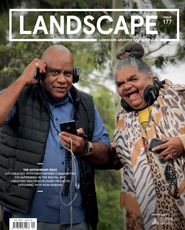
Practice
Published online: 15 Mar 2023
Words:
Ricky Ray Ricardo
Images:
John Gollings,
Scott Burrows,
Will Salter
Issue
Landscape Architecture Australia, February 2023

